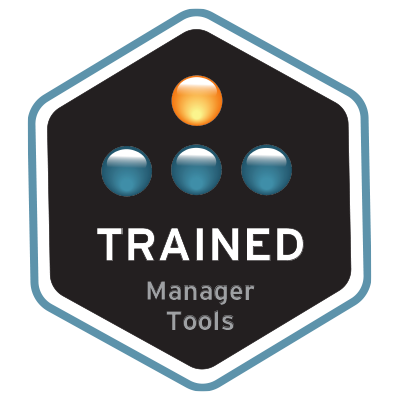![]()


in
Forums
How do I handle the Trinity with a mixed team, where I am part-way through implementing the trinity with my current team and have a new group added to my team?
I have a team of 12, and have been doing MTO3s for years. I am (again) about 3 weeks into Feedback (rolled out, 3 weeks of positive feedback). I just found out that I will have another, smaller team (about 6) that will be added to me shortly. I assume I continue with my feedback rollout with the originals, and start O3s with a rollout for the new group. I can see situations coming up where I want to talk about O3s with the new group as a group, but the original group already heard it, and where I'll want to talk about feedback with the whole original group but the new group won't know what I'm talking about.
Any suggestions, or pitfalls to watch out for? Even with 19, I'm going to try to do O3s every week (although I suspect the O3s with contractors and interns may be delegated to other directs for their development and to help with my load). Other ideas or warnings?
On a related note, does the Roadmap tool handle this? I think this is going to mess up my tracking in the tool.
Thanks
Steve



Random thoughts
Seen a number of managers I admired go through this. Most of them treated the situation as two distinct teams, with their own rhythms, gradually growing at least one person on each to be their number-two for that team then their replacement for managerial duties. A few eventually combined the two teams into one, but only to prepare for splitting back into (slightly revised) teams.
Twelve seems far on the long end of a good span-of-control, with 18-19 well outside the bounds of effectiveness. Seen a number of managers try to show more-than-a-dozen can be done, and each failed to do so. For the startup I'm in, I've drafted guidelines for span-of-control, insuring against later growth preventing rational thought -- I aim to cap span-of-control at six inter-coordinating directs.
As a team lead, I've gone the delegate-O3 development route often -- highly recommended.
Excellent ideas
I appreciate the ideas. I raised the numbers as a concern when they came to me with the idea, and was sort of told, "We have every confidence that you'll do great." I'm certainly starting to delegate more to my current directs, with the idea of finding some on the new to to delegate to as well.
Again - thank you for the suggestions!
I was in your situation about
I was in your situation about a year ago. It didn't go well, so hopefully you can learn from my mistakes:
1) I reset everyone back to O3s and tried to do the rollout again from scratch as one new group. The new group appreciated it. The old group was frustrated. I wish I would have kept the old group going in feedback.
2) I half-delegated the O3s. My boss forced a team lead situation on me... 4 team leads with 4-5 team members each, but their scope was 100% technical advisor. I retained all accountability and responsibility for performance, project assignments, and admin stuff. I did bi-weekly O3s with all 22 directs. The team leads picked up an O3 with the directs who didn't O3 with me that week.
It was a waste of time. 30 minutes every other week wasn't enough interaction for me. I should have fought back on the technical advisor team lead situation. I would have had better results I think if I had meaningful relationships with 10 high impact directs and all but ignored 10 low impact directs.
3) WIth 22 directs, I tried to be a manager rather than a working manager. My billability dropped, but I kept my 22 directs billable. This was great! I wanted to be a manager! I love organizational effectiveness! The company believes in my abilities!
But it turns out that's not what my execs wanted. They didn't see 22 billable people and 1 unbillable = ~95% billable. They saw sub-10% billable against one name. I was laid off.
Looking back, the company didn't want management. They just needed to stash people under someone on the org chart because that's the way they've always done it. And the less manager overhead the better. A manager or two who was borderline derelict in their manager duties, but were always billable are still at the company.
I wish I had understood that dynamic. I saw it. And I ignored it.
Wow - thanks for the insight
Good news is, I don't think I'm in that situation at all. Your situation sounds really rough! I'm sorry you had to go through that.
I did continue 1-1s with my old team, and am trying to continue feedback. The challenge I have there is that now I have even less interaction with them, to catch them doing good things, to give the positive feedback. That has more or less stalled. And the other team resents that I want to do weekly 1-1s (grrr).
I don't have team leads - it's me, and 2 full teams of directs. I'm considering team leads, and your insights above give me something to think about.
The main difference is I am expected to be a manager - no "working" about it :-) I'm not billable already, so my results are completely based on the teams delivery, not specifically my contribution.